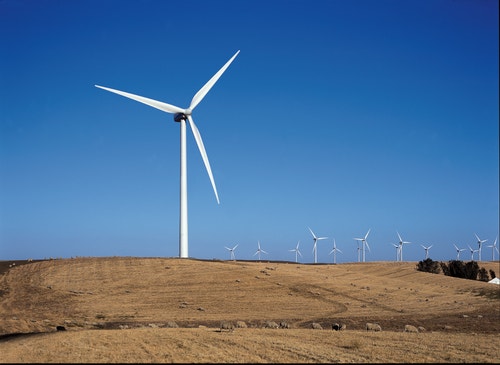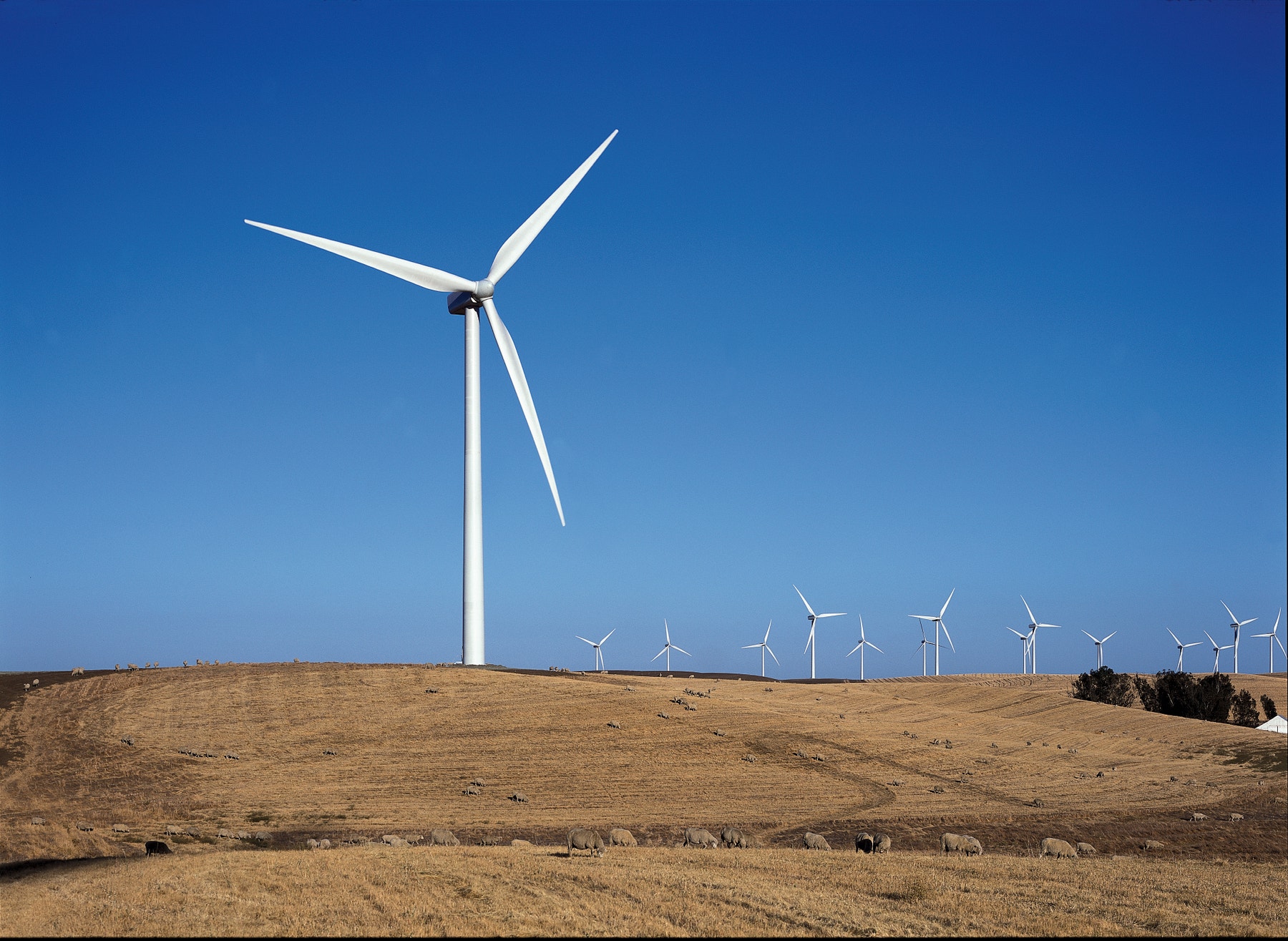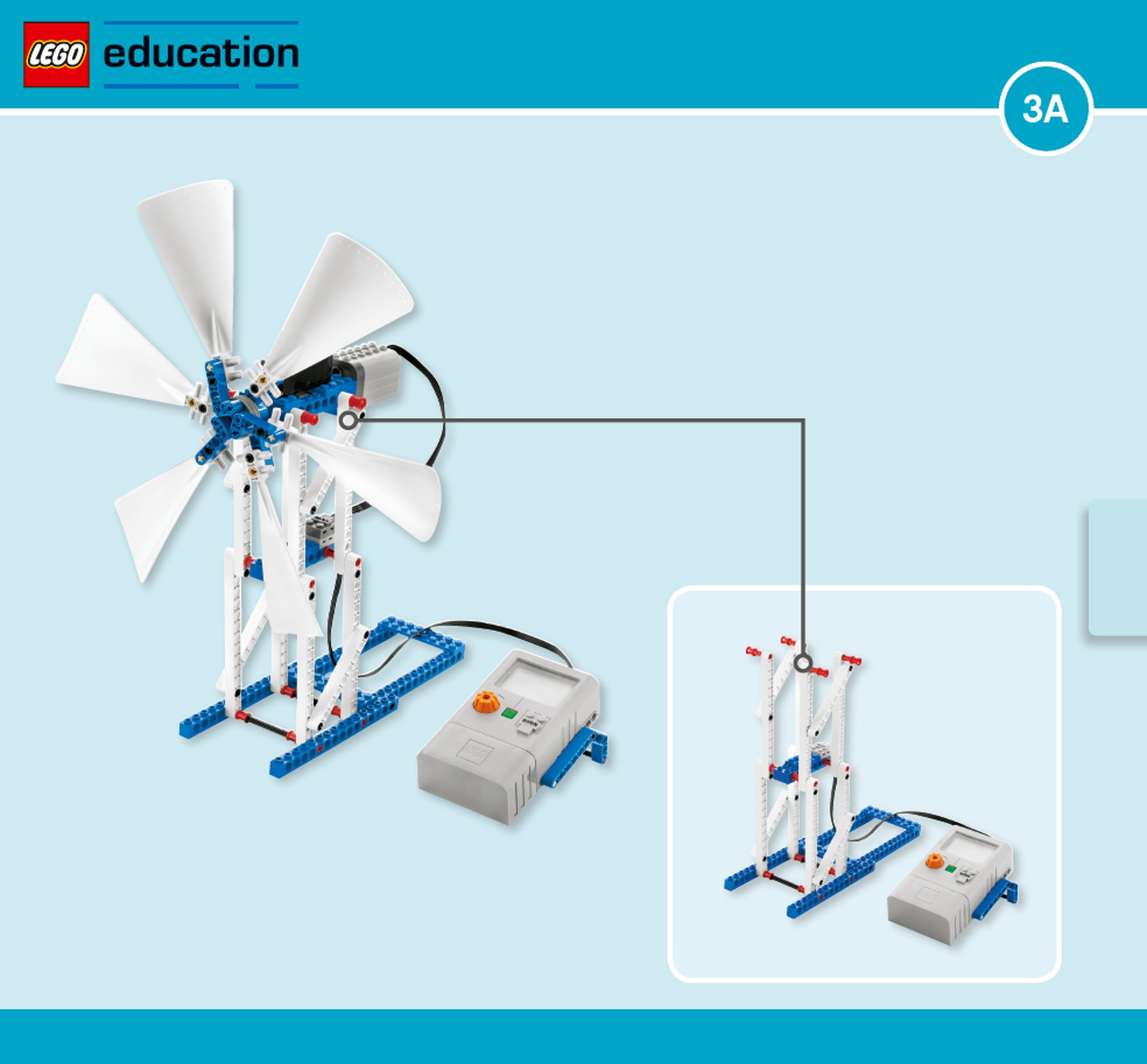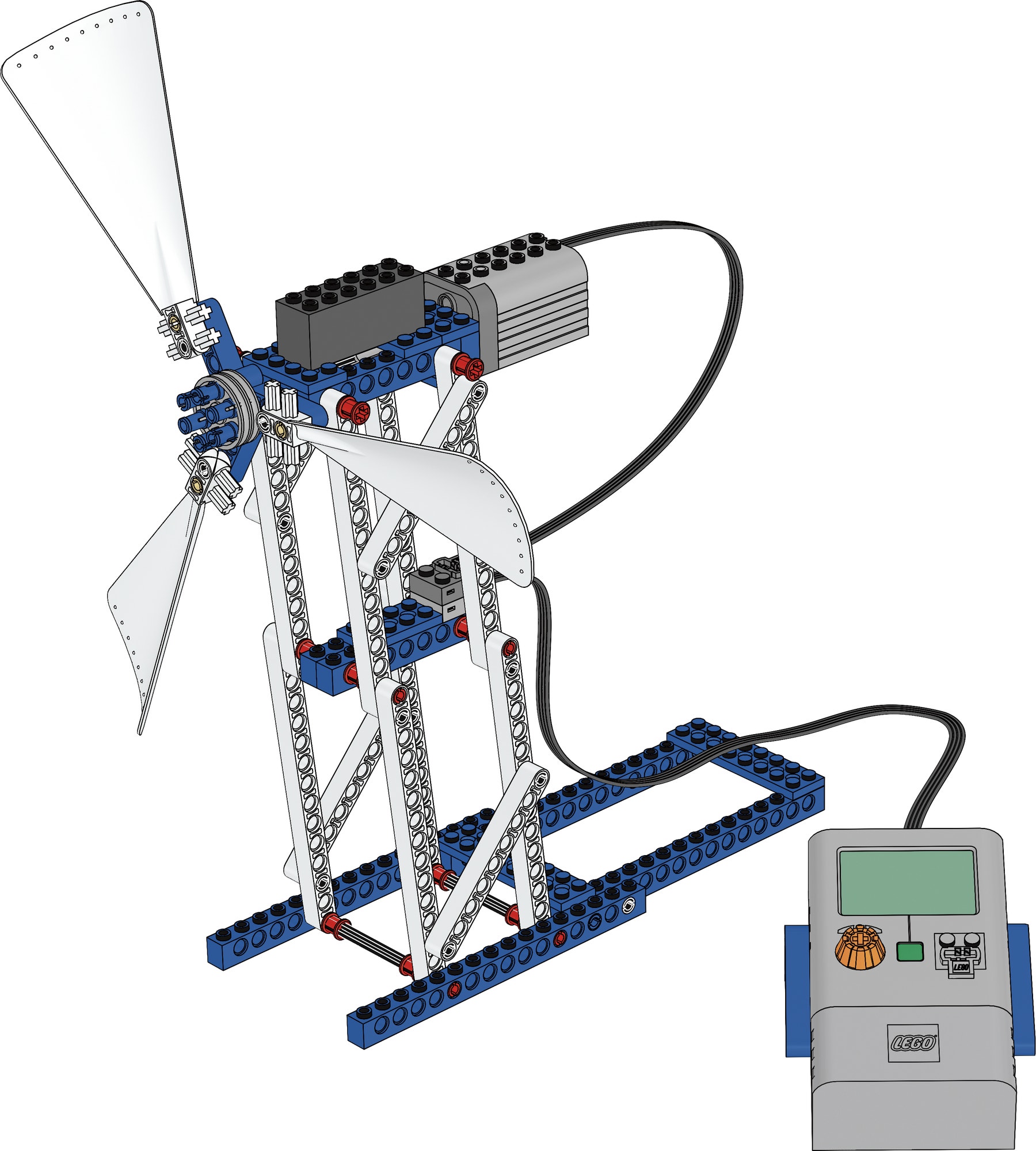Wind Turbine
Explore transfer, transformation, storage and dissipation of energy with reference to conversion of wind energy to electrical energy.

Connect
(5-10 Minutes)
Wind turbines have the ability to convert the wind’s kinetic energy into electrical energy. They are used to generate electricity for large utility grids and in isolated locations, such as rural farms.
Now build the wind turbine and investigate its ability to generate power.

Construct
(20-25 Minutes)
Build the Wind Turbine
(building instructions booklets 3A and 3B, to page 43, step 18)
Test the model’s functionality. Loosening bushings can reduce friction.
Connect the plugs properly by pressing them firmly together.
Make sure to return the joules (J) reading to zero before testing.

Test Setting
Align the center of the fan to the center of the wind turbine with a distance of 30 cm (= 12 in.) between them.
Choose a suitable power setting on the fan that makes the wind turbine rotate at an adequate speed and where the Energy Meter’s display shows more than 2.0 V on the input reading. The fan must have an effect of at least 40 W.
To find the optimal set up, look at the Energy Meter readings as an indicator of which position generates the most power.
Stability is important; one could choose to use adhesive tape or books to hold the wind turbine in place.
Students can gently ‘turn’ the blades to get the wind turbine started if needed.

Warning! This may be dangerous!
Warning!
Fans are potentially dangerous. Make sure that students handle them with great care!
Ensure that students turn the fan off when changing the number of blades during the activity.
Contemplate
(20-25 minutes)
Six Blades and Changing the Distance
The task requires students to investigate the performance of the wind turbine at different settings and to read and record the average voltage (V) and the average power (W) generated.

First, have students predict the voltage and power generated by the wind turbine at a distance of 30 cm (= 12 in.).
Then, have students investigate and read the average voltage and average power generated by the wind turbine. Have them read and record their findings.
Next, have students turn off the fan and change the distance to 15 cm (= 6 in.). Follow the same procedure as described above.
Findings will vary; students will see that power increases when the wind turbine is moved closer to the wind source.
Hint
Reset the Energy Meter before each investigation.
Have students reflect on their investigations by asking questions such as:
• Which factors did you base your predictions on?
• Can you explain your findings?
• Can you identify a pattern or trend in the findings?
The closer the wind source is to the wind turbine, the more power that is generated.
• How did you make sure that your findings were scientifically valid?
Students need to investigate several times to make sure findings are consistent and that the wind turbine stays in the same position and at the same distance from the fan.
Did you know?
Wind turbines can rotate around both horizontal and vertical axis. Horizontal-axis wind turbines (HAWT) are most commonly used.
Continue
(25-30 Minutes)
Three Blades and Changing the Distance
(building instructions booklets 3A and 3B, to page 44, step 1).
The task requires students to investigate the performance of the wind turbine at different settings and to read and record the average voltage (V) and the average power (W) generated.
Hint
Have students turn off the fan before changing the number of blades on the wind turbine.

First, have students predict the voltage and power generated by the wind turbine at a distance of 30 cm (= 12 in.).
Then, have students investigate and read the average voltage and average power generated by the wind turbine. Have them read and record their findings.
Next, have students turn off the fan and change the distance to 15 cm (= 6 in.). Follow the same procedure as described above.
Findings will vary; students will see that power increases when the wind turbine is moved closer to the wind source. Students will find that the wind turbine with six blades generates more power.
Hint
Reset the Energy Meter before each investigation.
Identifying Variables
Have students identify and write down at least three variables, explaining clearly how these affect the wind turbine’s efficiency.
Some factors could include the effect of changing the number of blades used, the angle between the center of the fan and wind turbine and the force of the wind. The efficiency of the E-Motor plays a major role in the overall efficiency of the wind turbine.
Optional
Have students simulate different landscapes to investigate the increase or decrease in the wind turbine’s ability to generate power. You can simulate a landscape feature by e.g. placing a book between the fan and the wind turbine.
Have students describe their simulations, the setup and key measurements, e.g. the height and the distance between the fan and the wind turbine.
Teacher Support
Students will explore the concepts of:
Scientific investigation
Conversion and storage of energy
Investigating and evaluating variables
Informal and formal measuring of distance/time/speed/work
Reading, predicting, and interpreting data
9686 Simple & Powered Machines Set (two students per set recommended)
9688 Renewable Energy Add-on Set
Adhesive tape
Fan with an effect of at least 40 W
Ruler or measuring tape
NGSS
Disciplinary Core Ideas: Physical Science
MS-PS3 Energy
Crosscutting Concepts
Cause and effect: Mechanism and explanation
Scale, proportion, and quantity
Systems and system models
Energy and matter: Flows, cycles, and conservation
Structure and Function
Stability and change
Science and Engineering Practices
Developing and using models
Planning and carrying out investigations
Analyzing and interpreting data
Constructing explanations and designing solutions
Obtaining, evaluating, and communicating information
Common Core State Standards English Language Arts
SL 6-8.1 / SL 6-8.4 / RST 6-8.3 / RST 6-8.4 / RST 6-8.7 / WHST 6-8.1 / / WHST 6-8.2 / WHST 6-8.4
Student Material
Share with:
 Google Classroom
Google Classroom



